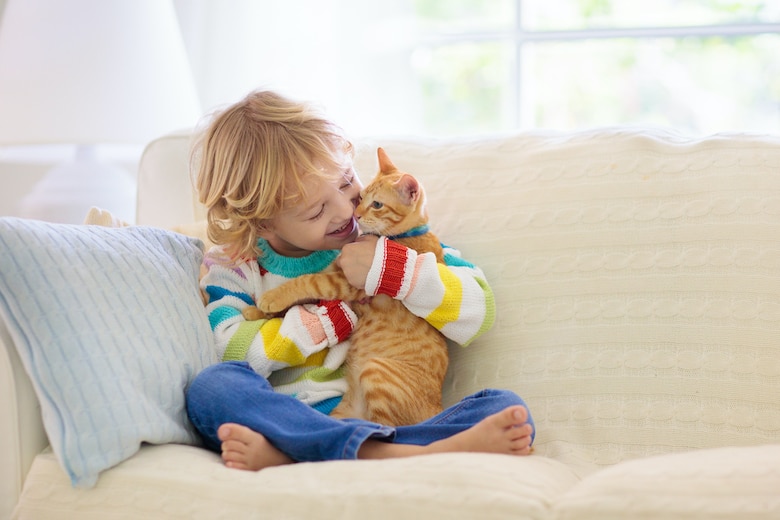New parents are often (and understandably) concerned about how their cat will react to a new baby. But even if things go well and the cat warms up to a newborn, life changes when your baby turns from a stationary bundle of joy into a toddler.
“The toddler is a little different than the baby,” says Dr. Catherine Lenox, DVM and Regulatory Veterinary Manager at Royal Canin. “Toddlers are more mobile…the child starts walking and interacting with the cat in a different way.”
This may lead to interactions between your two babies that stress one or both out, such as if the toddler pulls the cat’s tail. Dr. Lenox says the most important thing a parent can do is supervise every interaction. She shared ways to keep the peace between your cat and your toddler if, while watching, you observe things going in the wrong direction.
Give the cat space
Real talk: As much as you love your kid, you need a break from them sometimes. Assume your cat does, too.
“It’s really important to let the cat decide if the cat wants to interact,” Dr. Lenox says. “Have a safe space for the cat. They can eat there and use their litterbox there. If they need some quiet time, they have an area where they can go where the toddler doesn’t have access.”
This space could be in a gated-off room or large closet. Try to give the kitty a place to jump to get away, too, such as a cat tree.
Observe body language
Cats can’t talk, but they tell us a lot through their body language.
“When you are supervising a cat and toddler, it can be a totally good interaction, but the cat may also have too much at some point,” Dr. Lenox says. “It’s really important to be able to read the cat so you can safely end the interaction if you need to.”
Dr. Lenox advises paying attention to the tail and ears.
“If the ears turn backwards or they are swishing their tail a lot — that can be the first sign of irritation,” she says.
On the other hand, if Kitty is purring, has forward-facing ears and a still tail, they are enjoying playing with their human sibling.
Keep an eye on what goes on the floor
Toddlers tend to go through at least one phase where they throw food on the floor. Some of those foods, like garlic, are toxic.
“Have the cat in a separate room when the toddler is eating,” Dr. Lenox suggests.
Dr. Lenox also recommends picking up toys with small parts that the cat could choke on when you leave the room.
Have the toddler help with the cat
Pets are great for kids — they teach empathy and how to care for someone else. Getting your toddler involved in care for the cat, such as measuring out and giving Kitty their food, can be both a learning and bonding experience.
“Helping gives the toddler a sense of how to treat them,” Dr. Lenox says.
And it lets the cat knows the tiny human is here to help and provide love.
“If they have positive things they can associate with the child…that is going to help keep a better relationship,” Dr. Lenox says.
Featured Image: FamVeld/Getty Images
Read Next: 5 DIY Projects You and Your Kids Can Make for Your Cats
